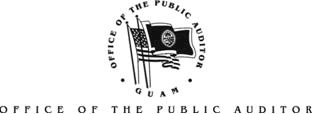
FY 2004 Highlights
February 1, 2005
The Guam International Airport Authority (Airport), after incurring losses for five consecutive years, ended fiscal year 2004 with an increase in net assets of $2.3 million (net assets is the government accounting term for profit). The audit was conducted by Deloitte & Touche LLP.
Passenger enplanements, which represents the number of passenger arrivals into Guam, increased 28% from 1.2 million in 2003 to 1.5 million in 2004. As a result of the increased visitor arrivals, operating revenues increased by $1.5 million.
Overall, operating expenses decreased by $2.2 million with over $1.2 million due to the decrease in contractual services. Legal fees increased slightly to $573,000 from $510,000, or 12%. Travel expenses, as compared to 2003, decreased by $439,000, or 85%, from $517,000 to $78,000.
The Airport also reduced its employee count by 43, or 16%, from 262 to 219. This resulted in a savings of $694,000. However, the savings was offset by the increase in retirement contributions of $595,000 due to the unfunded liability adjustment in FY2004. Total personnel services and related costs, which includes salaries, retirement contributions and insurance, was $11 million compared to $11.2 million in 2003, a $200,000 reduction.
A significant factor contributing to the 2004 increase in net assets was the reduction in non-recurring expenses by 95% from $11 million in 2003 to $444,000. In 2004, $444,000 was for typhoon related expenses bringing the total damages incurred by Typhoon Pongsona to $6.4 million. In 2003, non-recurring expenses of $4.9 million included projects such as the Governorsí statues, the Terra Cotta Exhibit, and the one-time promotional cost and off-island consultant.
Noteworthy is the decrease of questioned costs and the decrease in reportable findings between FY2004 and FY2003. For FY2004, there were four reportable findings and questioned costs of $153,558 in the compliance and internal controls report. The questioned costs resulted from non-compliance with federal procurement regulations for typhoon repairs. There were no noted material weaknesses in the FY2004 findings as compared to FY2003ís 9 findings, 3 of which were material weaknesses, and $3,217,419 in questioned costs.
In a separate letter the auditors made seven recommendations of which four dealt with payroll related processes.
For a detailed analysis see the Management Discussion and Analysis.